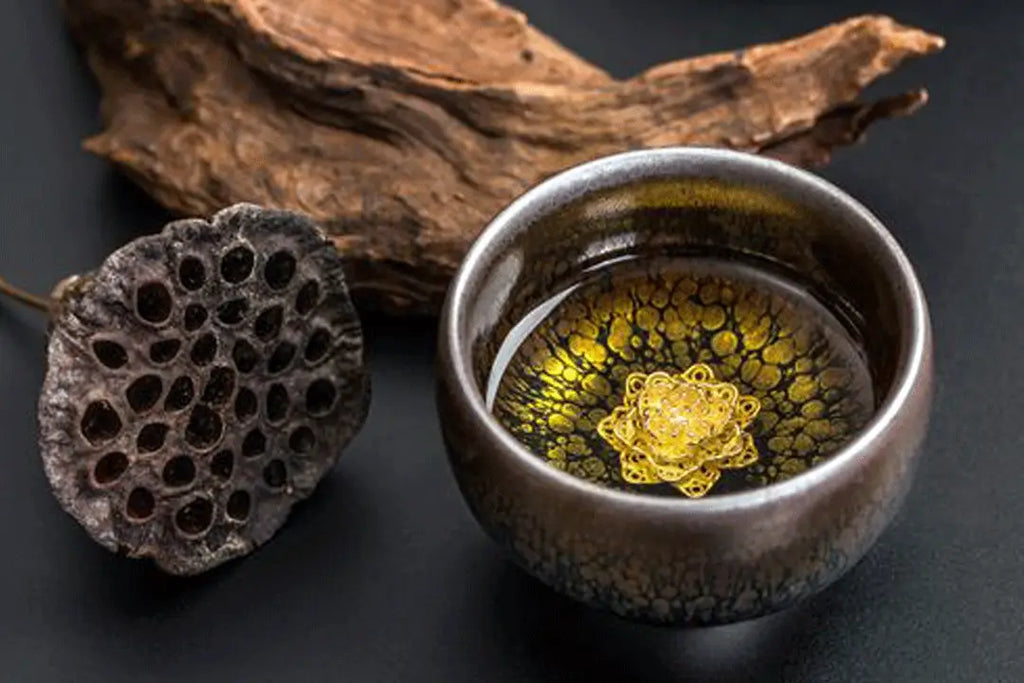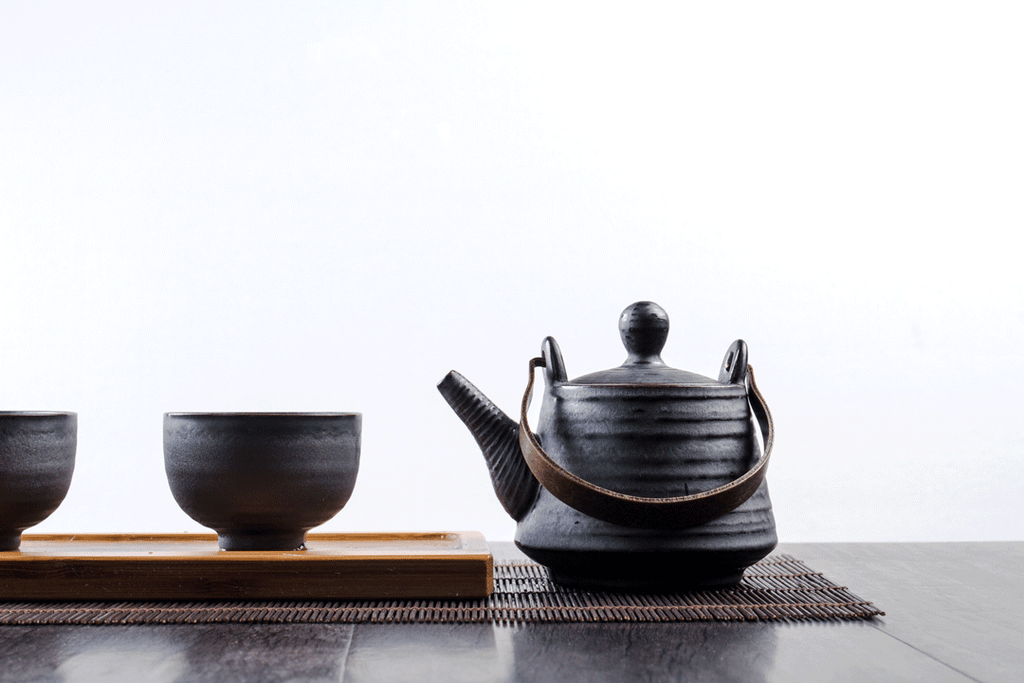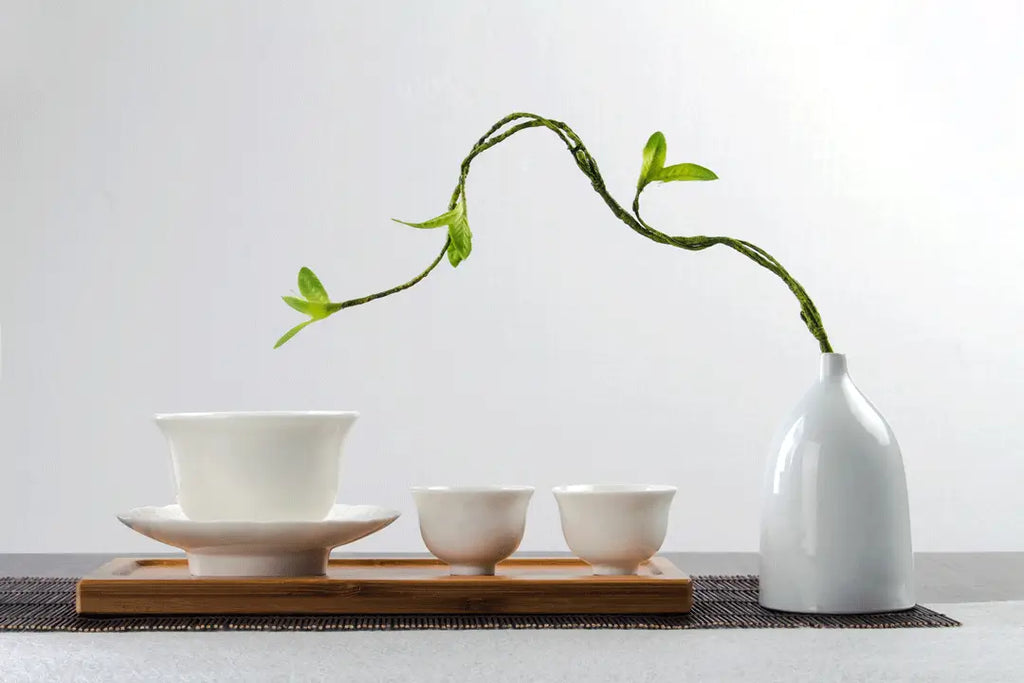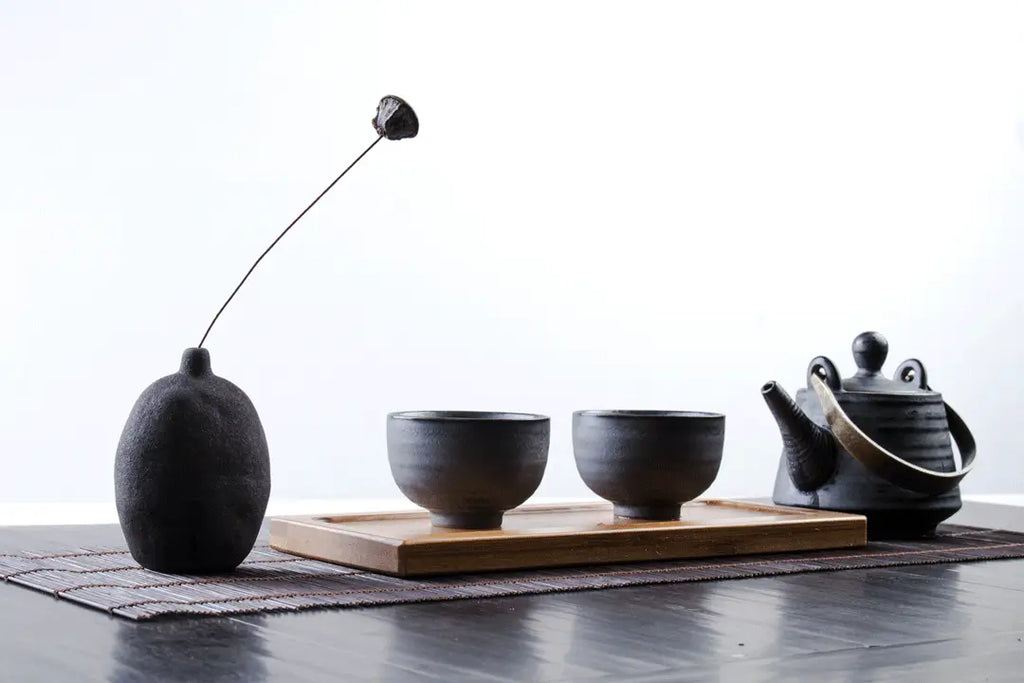
Tenmoku & Jian Zhan Tea Cups: An Expert Guide

Jian Zhan (建盏), or Jian Ware, refers to a kind of Chinese pottery which was originally made in Jianyang, China. Jian Zhan is also known as ‘Tenmoku’ (天目) in Japan. Different kinds of Jian Zhan pottery exist, but bowls and cups are generally the most popular forms of craft. These cups are loved for their dark and thick glaze with colourful ‘special effects’. These special patterns are achieved by high temperature firing, so that the glaze starts to crystallise in beautiful patterns. Patterns that can occur could for example be stripes, feathers or oil spots.
In this article, we will discuss the historical context of the rise of Tenmoku, how cups are made, and how it may improve your tea experience.
If you're interested to see all the different kinds of patterns, you can visit our Master Cup category page.
 Jian Ware: A Historical Context
Jian Ware: A Historical Context
While Jian Ware originated from the Tang Dynasty (618 to 907) it became particularly popular during the Song Dynasty (960–127). During the Tang, people prepared tea from tea cakes and enjoyed appreciating the nuances in light coloured tea ware. However, during the Song an important transition to ‘whipped tea’ took place. Compressed tea cakes were now ground into tea powder. This was then whipped into a thick broth in a large bowl/tea cup. As such, large and dark Jian Zhan tea cups became popular to match the intensity of the whipped tea colour.
As early as the Yuan Dynasty, the popularity of Jian Zhan tea cups was decreasing as the concept of ‘steeped tea’ as we know today was overtaking whipped tea.
Luckily, in the past 10 years, the art of Jian ware is being revived by Chinese ceramic artists. Today, Jian cups are made in many different colours by trying out different material specifications for the glaze and varying fire temperatures. Tenmoku cups are now also used for drinking loose leaf teas.
 Jian Zhan versus Tenmoku
Jian Zhan versus Tenmoku
Japanese monks also introduced powdered tea to Japan and called it ‘Matcha’. The Japanese also started to produce Jian Ware themselves and called it ‘Tenmoku’. Thus, we have two different terms today, describing these cups.
 Jian Zhan Tea Cup Process: How is Tenmoku made?
Jian Zhan Tea Cup Process: How is Tenmoku made?
Material selection & preparation
High quality Jian Ware starts with using the right materials. Both the materials for the glaze and the clay required high iron content. Because Jianzhou satisfied this natural requirement, it became the centre of this particular type of pottery. Other regions that attempted to imitate the quality of Jianyao’s cups during the Song Dynasty failed, because of the lower iron content in their regional ore.
The materials are crushed and sieved to achieve a moderate thickness. Both the clay slurry and glaze are then carefully stored in a room with controlled humidity and temperature. Today, the process of crushing is much easier due to the availability of machines. Yet, the artist must monitor and judge that the materials are crushed evenly to avoid cracks during firing.
Shaping and firing the base
When the clay is ready, it’s kneaded to remove air from the clay. This process also makes the clay more dense and uniform. Afterwards, tea cups are shaped by hand on a turning table. Afterwards, a small knife/tool is used to modify and perfect tea cup.
At last, the unglazed tea cup is fired. This process will strengthen the cup and filter out those cups that are fragile.
Tenmoku Glaze & Firing
Once the base tea cup is done, it's ready to be glazed. The glaze is made use a combination natural iron ore as well as plant ash.
By using different kinds of iron ore and plant ash, different results can be achieved through crystallisation of the glaze during high temperature firing. Getting the blend right is a challenging process as the raw materials used have naturally unique characteristics. Thus, the ceramics artists will have some tweaking to do to get it right. Due to this, the artist tends to buy more raw materials at once to avoid repeating the adjustment process too often.
Jian Zhan tea cups are often half glazed. Tea cups are often dipped into the glaze while leaving the bottom part unglazed. Glazing requires lots of practice to make sure the glaze isn’t too thin (to allow proper crystalization during firing) or too thick (to avoid the glaze stick to the bottom).
Once the glaze is applied, it will be put into an oven and fired at a temperature around 1300ºC (2370ºF). It's said that firing the oven using pinewood offers the best effect.
The temperature may be slightly adjusted depending on the type of glaze and the crystallisation effect the artist wants to achieve. This is really exact science that has to be taken very seriously as a few degrees more or less can change the final result completely. An interesting fact is that new patterns and colours of crystallisation is often discovered due to mistakes in blending of the glaze and oven temperatures.
After the firing process is done, the artist will check the quality of each individual cup. Cups that are cracked or imperfect are disposed off.
The cups that pass the quality inspection will be divided into different grades and sold to tea enthusiasts.
When you order Jian Zhan from Chimart, you'll be assured that:
- We never ship you a faulty Jian Zhan cup. These will be filtered out during our procurement process.
- The measure of the cup will only differ by only +/- 3mm (0.12in) relative to the specified measures on the product page.
- The glaze fully covers the inside of the tea cup. The base cup surface is not visible.
- The glaze on the inside and the outside don't have holes.
- The glaze and its crystallization is considered to be of great quality by our Jian ware experts.
- Jian cups over 30 USD come with a strong gift box and certificate of the artist.
 Jian Zhan & Temoku Tea Cup Benefits
Jian Zhan & Temoku Tea Cup Benefits
Heat retention
Taste improvement
Improve Health
 Other Facts & Questions about Jian Zhan / Tenmoku
Other Facts & Questions about Jian Zhan / Tenmoku
- No tenmoku cup is the same: A traditionally made tenmoku cup is always unique. This is because the base of the cup is handcrafted from clay, and the glaze is naturally formed through crystallization during high temperature oven firing.
- Is tenmoku glaze food safe: The glaze of a tenmoku cup is not toxic. It's made from a blend of iron ore and plant ash, and is completely food safe. This is because the high temperature firing has made the glaze unleachable. A good way to verify this is to pour lemon juice or vinegar in your Jian cup and leave it overnight. If the colour of the glaze changes, it means the glaze is leached by the acid of lemon/vinegar, meaning it's not food safe. Of course, if you see that your cup is not fully glazed, meaning that a part of the base is shown on the inside of the cup, then your cup is not food safe. When you see holes or cracks on the inside of the Jian Zhan tea cup, then it's also not food safe.
- What is tenmoku glaze?: The glaze of a tenmoku cup revers to the outside coating of the base clay cup.
- How to make a tenmoku glaze recipe for blue or gold colour?: As we explained above, the iron ore and plant ash speficiations is different from region to region, and thus the right blend should be determined through experimentation. It's therefore not possible to provide you an exact recipe.





